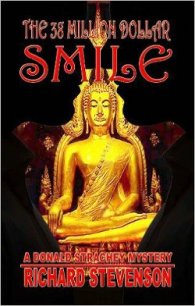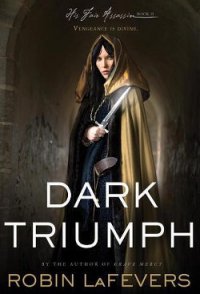Congo - Crichton Michael (книги регистрация онлайн бесплатно .TXT) 📗
Munro clapped his hand over her mouth. He pointed to the clearing, and mouthed one word: Kigani.
Ross’s eyes went wide. Munro took his hand away.
They all stared at the farmhouse. Still there was no sign of life. Ross made a circular movement with her arm, suggesting that they circle around the clearing and move on. Munro shook his head, and pointed to the ground, indicating that she should sit. Munro looked questioningly at Elliot, and pointed to Amy, who foraged in the tall grass off to one side. He seemed to be concerned that Amy would make noise. Elliot signed to Amy to be quiet, but it was not necessary. Amy had sensed the general tension, and glanced warily from time to time toward the farmhouse.
Nothing happened for several more minutes; they listened to the buzz of the cicadas in the hot midday sun, and they waited. They watched the laundry flutter in the breeze.
Then the thin wisp of blue smoke from the chimney stopped.
Munro and Kahega exchanged glances. Kahega slipped back to where the porters sat, opened one load, and brought out a machine gun. He covered the safety with his hand, muffling the click as he released it. It was incredibly quiet in the clearing. Kahega resumed his place next to Munro and handed him the gun. Munro checked the safety, then set the gun on the ground. They waited several minutes more. Elliot looked at Ross but she was not looking at him.
There was a soft creak as the farmhouse door opened. Munro picked up the machine gun.
No one came out. They all stared at the open door, waiting. And then finally the Kigani stepped into the sunlight.
Elliot counted twelve tall muscular men armed with bows and arrows, and carrying long pangas in their hands. Their legs and chests were streaked with white, and their faces were solid white, which gave their heads a menacing, skull like appearance. As the Kigani moved off through the tall manioc, only their white heads were visible, looking around tensely.
Even after they were gone, Munro remained watching the silent clearing for another ten minutes. Finally he stood and sighed. When he spoke, his voice seemed incredibly loud. “Those were Kigani,” Munro said.
“What were they doing?” Ross said.
“Eating,” Munro said. “They killed the family in that house, and then ate them. Most farmers have left, because the Kigani are on the rampage.”
He signaled Kahega to get the men moving again, and they set off, skirting around the clearing. Elliot kept looking at the farmhouse, wondering what he would see if he went inside. Munro’s statement had been so casual; They killed the family. .. and then ate them.
“I suppose,” Ross said, looking over her shoulder, “that we should consider ourselves lucky. We’re probably among the last people in the world to see these things.”
Munro shook his head. “I doubt it,” he said. “Old habits die hard.”
During the Congolese civil war in the 1960s, reports of widespread cannibalism and other atrocities shocked the Western world. But in fact cannibalism had always been openly practiced in central Africa.
In 1897, Sidney Hinde wrote that “nearly all the tribes in the Congo Basin either are, or have been, cannibals; and among some of them the practice is on the increase.” Hinde was impressed by the undisguised nature of Congolese cannibalism: “The captains of steamers have often assured me that whenever they try to buy goats from the natives, slaves are demanded in exchange; the natives often come aboard with tusks of ivory with the intention of buying a slave, complaining that meat is now scarce in their neighborhood.”
In the Congo, cannibalism was not associated with ritual or religion or war; it was a simple dietary preference. The Reverend Holman Bentley, who spent twenty years in the region, quoted a native as saying, “You white men consider pork to be the tastiest of meat, but pork is not to be compared with human flesh.” Bentley felt that the natives “could not understand the objections raised to the practice. ‘You eat fowls and goats, and we eat men; why not? What is the difference?’
This frank altitude astonished observers, and led to bizarre customs. In 1910, Herbert Ward wrote of markets where slaves were sold “piecemeal whilst still alive, incredible as it may appear, captives are led from place to place in order that individuals may have the opportunity of indicating, by external marks on the body, the portion they desire to acquire. The distinguishing marks are generally made by means of coloured clay or strips of grass tied in a peculiar fashion. The astounding stoicism of the victims, who thus witness the bargaining for their limbs piecemeal, is only equaled by the callousness with which they walk forward to meet their fate.”
Such reports cannot be dismissed as late-Victorian hysteria, for all observers found the cannibals likable and sympathetic. Ward wrote that “the cannibals are not schemers and they are not mean. In direct opposition to all natural conjectures, they are among the best types of men.” Bentley described them as “merry, manly fellows, very friendly in conversation and quite demonstrative in their affection.”
Under Belgian colonial administration, cannibalism became much rarer-by the 1950s, there were even a few graveyards to be found-but no one seriously thought it had been eradicated. In 1956, H. C. Engert wrote, “Cannibalism is far from being dead in Africa… I myself once lived in a cannibal village for a time, and found some The natives… were pleasant enough people. It was just an old custom which dies hard.”
Munro considered the 1979 Kigani uprising a political insurrection. The tribesmen were rebelling against the demand by the Zaire government that the Kigani change from hunting to farming, as if that were a simple matter. The Kigani were a poor and backward people; their knowledge of hygiene was rudimentary, their diet lacked proteins and vitamins, and they were prey to malaria, hookworm, bilharzia, and African sleeping sickness. One child in four died at birth, and few Kigani adults lived past the age of twenty-five. The hardships of their life required explanation, supplied by Angawa, or sorcerers. The Kigani believed that most deaths were supernatural: either the victim was under a sorcerer’s spell, had broken some taboo, or was killed by vengeful spirits from the dead. Hunting also had a supernatural aspect: game was strongly influenced by the spirit world. In fact, the Kigani considered the supernatural world far more real than the day-to-day world, which they felt to be a “waking dream,” and they attempted to control the supernatural through magical spells and potions, provided by the Angawa. They also carried out ritual body alterations, such as painting the face and hands white, to render an individual more powerful in battle. The Kigani believed that magic also resided in the bodies of their adversaries, and so to overcome spells cast by other Angawa they ate the bodies of their enemies. The magical power invested in the enemy thus became their own, frustrating enemy sorcerers.
These beliefs were very old, and the Kigani had long since settled on a pattern of response to threat, which was to eat other human beings. In 1890, they went on the rampage in the north, following the first visits by foreigners bearing firearms, which had frightened off the game. During the civil war in 1961, starving, they attacked and ate other tribes.
“And why are they eating people now?” Elliot asked Munro.
“They want their right to hunt,” Munro said. “Despite the Kinshasa bureaucrats.”
In the early afternoon, the expedition mounted a hill from which they could overlook the valleys behind them to the south. In the distance they saw great billowing clouds of smoke and licking flames; there were the muffled explosions of air-to-ground rockets, and the helicopters wheeling like mechanical vultures over a kill.


![[Magazine 1968-012] - The Million Monsters Affair - Davis Robert Hart (серия книг .txt) 📗](/uploads/posts/books/56864/56864.jpg)

